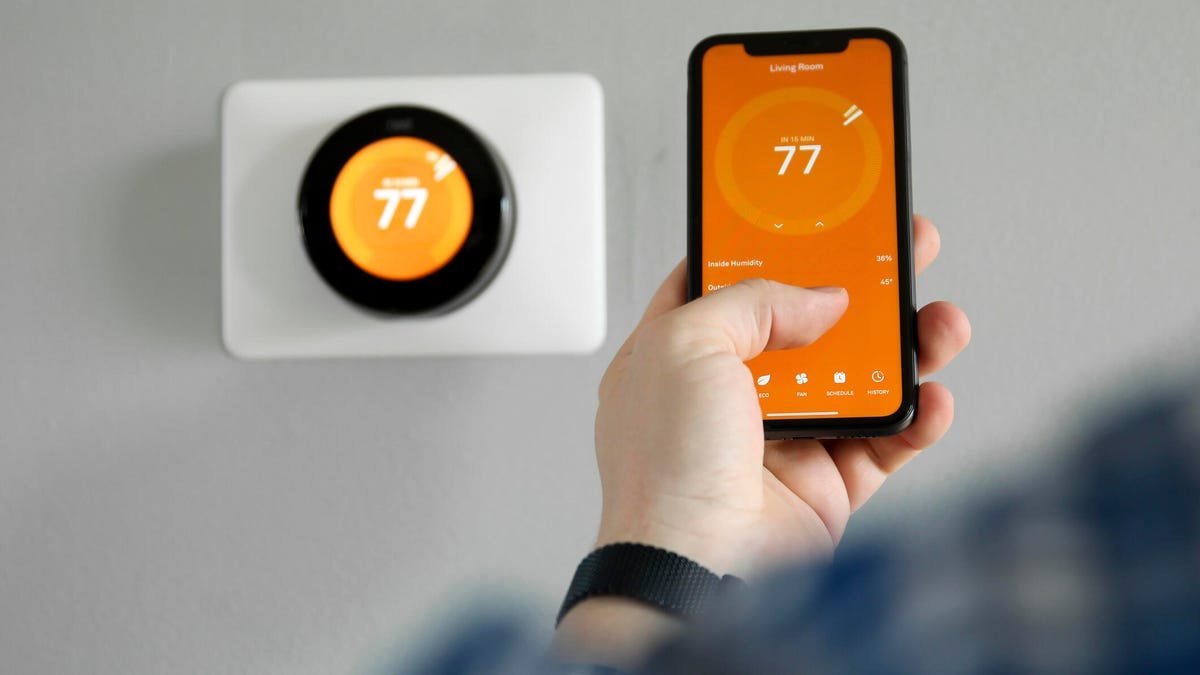You don’t need to own a large power plant to make a difference to the grid on a hot day. Thanks to virtual power plants, your own household appliances can help keep the lights on throughout your community.
The best part is, you might even get paid for it.
If you have a smart thermostat, there’s a good chance you can participate in a VPP. By doing so, you allow VPP to slightly reduce your energy consumption when it matters most, reducing stress on the grid and freeing up supply during peak periods. Here’s what you need to know about leveraging your smart thermostat to lower your electric bill and even earn cash or other rewards for participating.
What is a virtual power plant?
A virtual power plant is designed to support the electrical grid and brings together a lot of different appliances or devices, like home batteries, to provide power or reduce the load on the electrical system in moments when it can get out of balance. For the consumer, there is usually a fringe benefit, often in the form of cash or bill credits.
“A virtual power station is a way for households to change their energy use in times when the grid is strained and energy prices are really high,” said Ben Brown, CEO of virtual power station Renew Home. “People are able to earn rewards and make money by saving energy when it’s really expensive to produce it.”
VPPs work by aggregating electricity from different sources, which could include larger facilities such as solar and wind farms. They can also draw from much smaller energy sources that are connected to the grid, like the solar panels on your roof, your home battery, electric car chargers and smart thermostats. By shifting energy demand, VPPs keep utilities from having to build additional “peak plants,” or power plants that operate only during occasional peaks and typically burn fossil fuels.
In some cases, a VPP draws energy generated from these residential sources and delivers it to your plant. In other cases, as with smart thermostats, VPPs support the grid by reducing the amount of electricity used.
How your smart thermostat can help the grid
VPPs can use a lot of different devices, such as smart water heaters or home batteries, but the smart thermostat is a uniquely powerful tool.
“Smart thermostats are perhaps the most effective source of virtual utility services at the consumer level,” said Andrew Meyer, CEO of home energy savings platform Arbor. “They’re widespread—over 20% of American households have a smart thermostat—and they can respond automatically, as opposed to texting you and asking you to turn things off.”
Because HVAC systems are one of the biggest users of power in the average household, automatically bumping your smart thermostat up a degree or two in the summer or down in the winter can typically be done in a short period of just an hour or around that, add up to significant savings, Meyer said.
“Your thermostat may only move a degree or two, but the real work happens when it’s interacting with hundreds, thousands, or even millions of other homes,” says Brown.
In return, participating households cut their energy bills by using slightly less electricity while remaining comfortable. The savings are even greater if your energy plan includes time-of-use pricing during peak periods. You can also earn savings from VPP in exchange for that shift in power demand. If you’ve been considering upgrading to a smart thermostat, you may be able to take advantage of Inflation Reduction Act incentives like rebates as well as coupons or other incentives from your utility.
How to sign up for a virtual powerhouse (and get paid)
Whether you can participate in a VPP depends on both your smart thermostat and your utility. Meyer suggested contacting your local utility for more information. Some smart thermostat companies like Google Nest and Ecobee offer integrations with VPPs.
“Typically, VPP participation only takes a few clicks on the thermostat or app, and users can override events for any reason, ensuring you maintain ultimate control over your home’s climate,” Brown said.
The benefits of signing up for a VPP vary by plan, tool and location. In exchange for giving up some control over your smart thermostat, you can expect to see lower utility bills thanks to these automatic reductions in energy usage. Depending on your agreement, you may also see rewards in the form of credits on your electricity bill, gift cards or cash payments.
For Brown, VPPs solve the problem of everyday changes that can be difficult or time-consuming to implement by making these shifts in energy demand automatic.
“It’s hard to make behavioral changes all by yourself,” he said. “Virtual power plants provide opportunities for consumers to benefit from reduced energy costs while making it easy for them.”
